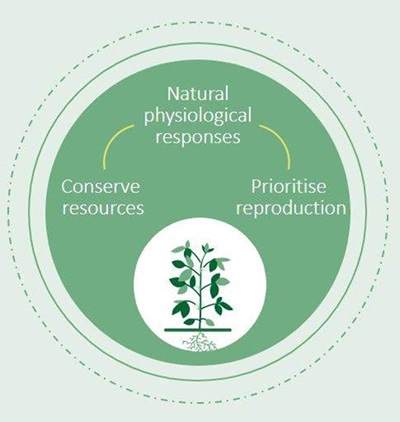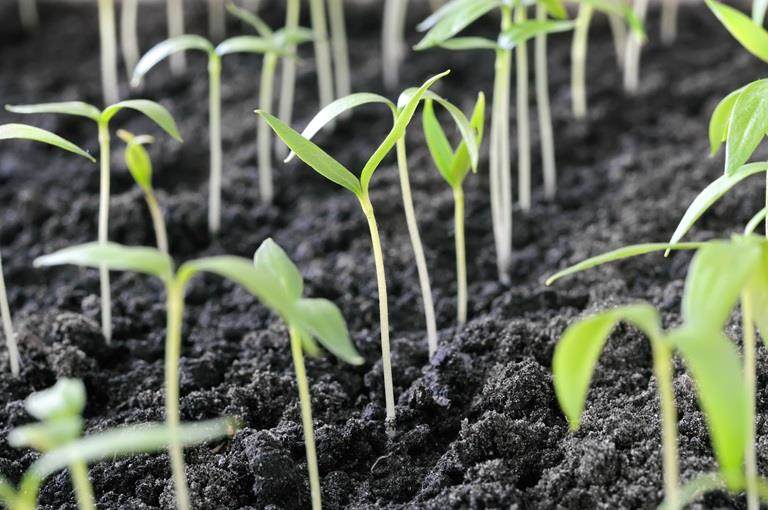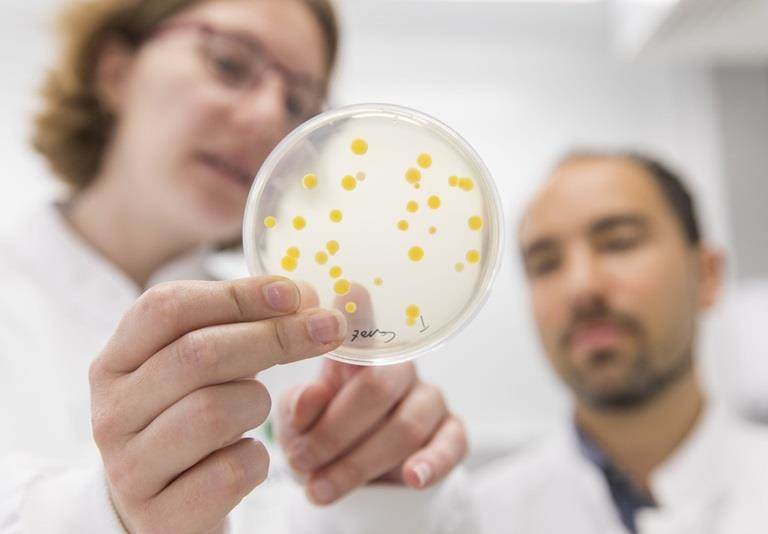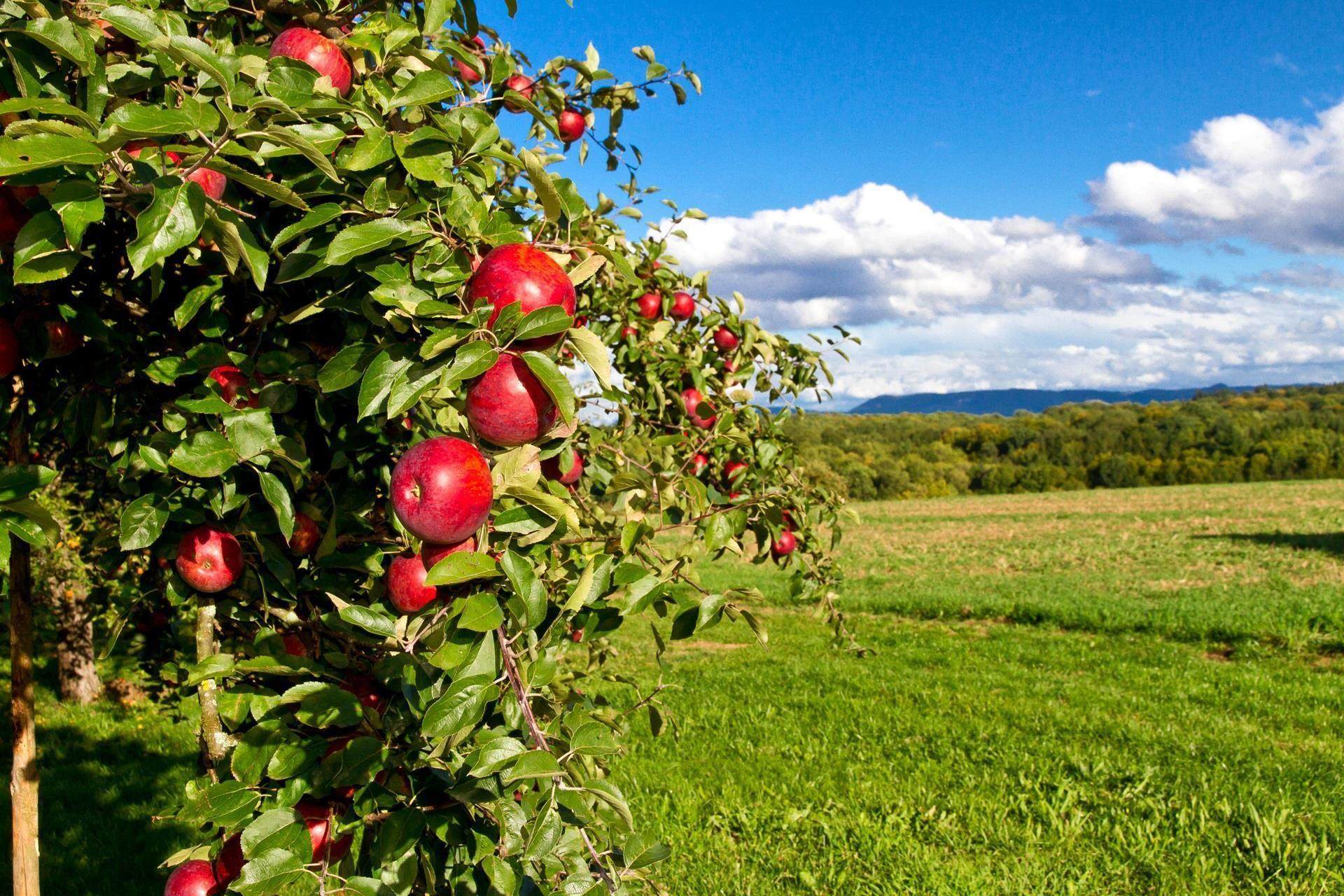
Biostimulants
Harnessing our expertise in complex plant stress responses, we develop innovative chemical biostimulants designed to work in harmony with natural plant processes. These solutions complement existing crop protection strategies to enhance crop quality, boost yields, and extend shelf life.
Our primary research operations on biostimulants are based in Harpenden, UK, within the historic Rothamsted campus—the home of the world’s oldest agricultural research center. This location provides access to state-of-the-art facilities and cutting-edge equipment, supporting advanced research in biostimulant crop enhancement.
We contribute to our global Commitment to become Land Positive by 2030. With global food demand on the rise, increasing agricultural productivity sustainably is essential. Our biostimulants are developed to stimulate or moderate plant responses, promoting healthier growth under both optimal and adverse conditions.
Key facts and benefits about our biostimulants
- Made with carefully selected compounds that support how plants naturally grow and respond to stress, tested thoroughly in both controlled environment and real-world conditions.
- Use safe synthetic or natural ingredients that are gentle on people and the environment.
- Help farmers grow more and better-quality crops, improve shelf life, and reduce food waste.
- Easy to use—typically applied as foliar sprays or seed treatments.
- Work well alongside other common farming products.
Why do we need biostimulants?
Studies show that to feed a global population expected to reach 9 billion by 2050, we’ll need to double crop production. The graph below shows yield data for four key crops: maize, rice, soybeans, and wheat. It highlights the challenge we face, with current yield increases not keeping pace with what is needed to meet demand. Due to the environmental and social consequences of increasing production area, sustainable intensification of existing agricultural land could be a better option.
Closing the ‘yield gap’ isn’t easy. Farmers are facing stricter regulations on agrochemical use and climate change is also making it harder to achieve consistent yields. That is why it is more important than ever to explore new, safe, and sustainable ways to boost crop performance. Biostimulants are playing an increasingly important role in helping farmers grow more with less, as part of a smarter, more sustainable approach to agriculture.
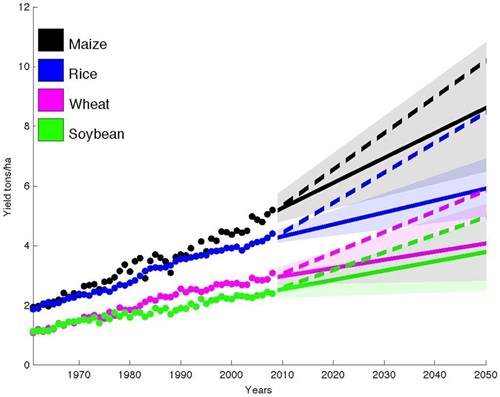
Graph taken from: Ray DK, Mueller ND, West PC, Foley JA (2013) Yield Trends Are Insufficient to Double Global Crop Production by 2050. PLOS ONE 8(6): e66428.)
How are biostimulants different from fertilisers and biologicals?
Biostimulants are often compared with fertilizers and biologicals, but there are some differences:
- Biostimulants vs. Fertilisers: Fertilisers provide essential nutrients (NPK, secondary and micronutrients) that plants need to grow. Biostimulants do not directly feed the plant; instead, they may improve nutrient use efficiency, tolerance to abiotic stress, or quality traits. Nevertheless, a biostimulant product may contain plant nutrients and potentially be registered as a type of fertiliser.
- Biostimulants vs. Biologicals: The term biological is generally used to describe living organisms (e.g. predatory insects), microorganisms (e.g. fungi, bacteria), or large molecules (e.g. peptides, proteins, RNA) that can be formulated into products and applied to crops to deliver beneficial results. They might be used as biopesticides, biocontrol agents, biofertilisers, or biostimulants. However, not all biostimulants are biologicals. Many biostimulants are complex mixtures/extracts or small molecules.
Together, they complement each other to support healthier, more efficient, and more sustainable crop systems.
How do we produce our biostimulants?
We start by studying how plants grow and respond to stress, looking at what might be limiting their yield—like poor nutrient uptake or damage from stress-related compounds. Using our knowledge of plant physiology and biochemistry, we design targeted solutions with specific modes of action.
Our biostimulants are either synthesized or carefully extracted from natural sources. We then create stable formulations for use as foliar sprays or seed treatment products. In some cases, we also work with partners to include our technology in their agricultural products.
